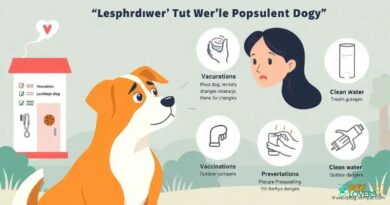What is Vulnerability in dogs
Understanding Vulnerability in Dogs
Vulnerability in dogs refers to their emotional and physical sensitivity to various stimuli in their environment. This concept encompasses a range of behaviors and reactions that indicate how a dog perceives and responds to stressors, whether they be social, environmental, or health-related. Recognizing vulnerability is crucial for dog owners, as it helps in creating a supportive environment that caters to their pet’s needs.
Signs of Vulnerability in Dogs
Dogs exhibit vulnerability through various signs, including submissive body language, avoidance behaviors, and vocalizations such as whining or barking. A dog that displays a tucked tail, lowered ears, or a cowering posture may be feeling threatened or insecure. Understanding these signs is essential for dog owners to address their pets’ emotional states effectively and provide reassurance when needed.
Factors Contributing to Vulnerability
Several factors can contribute to a dog’s vulnerability, including genetics, early socialization experiences, and past traumas. Breeds may have inherent traits that predispose them to anxiety or fearfulness, while a lack of exposure to different environments and situations during critical developmental periods can lead to heightened sensitivity. Additionally, traumatic experiences, such as abuse or neglect, can leave lasting impacts on a dog’s behavior and emotional well-being.
The Role of Socialization
Socialization plays a pivotal role in mitigating vulnerability in dogs. Properly socialized dogs are more likely to adapt to new experiences and environments, reducing their overall anxiety levels. Early exposure to various people, animals, and situations helps dogs build confidence and resilience, making them less prone to fearful or anxious reactions as they mature.
Impact of Environment on Vulnerability
The environment in which a dog lives significantly influences its vulnerability. A chaotic or unstable home environment can exacerbate feelings of insecurity, while a calm and structured setting can promote a sense of safety. Factors such as noise levels, the presence of other pets, and the owner’s behavior all contribute to a dog’s perception of its surroundings and its subsequent vulnerability.
Health Issues and Vulnerability
Health problems can also increase a dog’s vulnerability. Pain, illness, or discomfort can lead to changes in behavior, making a dog more sensitive to stressors. Regular veterinary check-ups and attention to a dog’s physical health are essential in identifying and addressing any underlying issues that may contribute to their vulnerability.
Building Resilience in Vulnerable Dogs
To help vulnerable dogs become more resilient, owners can implement various strategies. Positive reinforcement training, gradual exposure to new experiences, and creating a safe space for the dog to retreat to can all contribute to building confidence. Engaging in regular physical and mental stimulation also helps dogs cope with stress and reduces their overall vulnerability.
The Importance of a Supportive Owner
A supportive and understanding owner is crucial for a vulnerable dog’s well-being. Providing consistent routines, positive interactions, and a nurturing environment fosters trust and security. Owners should be patient and empathetic, recognizing that their dog’s vulnerability is not a flaw but rather a part of their unique personality that requires care and attention.
Professional Help for Vulnerable Dogs
In some cases, vulnerable dogs may benefit from professional help, such as working with a certified dog trainer or a veterinary behaviorist. These professionals can provide tailored strategies to address specific behavioral issues and help owners understand their dog’s needs better. Seeking professional guidance can be particularly beneficial for dogs with severe anxiety or fear-related behaviors.



